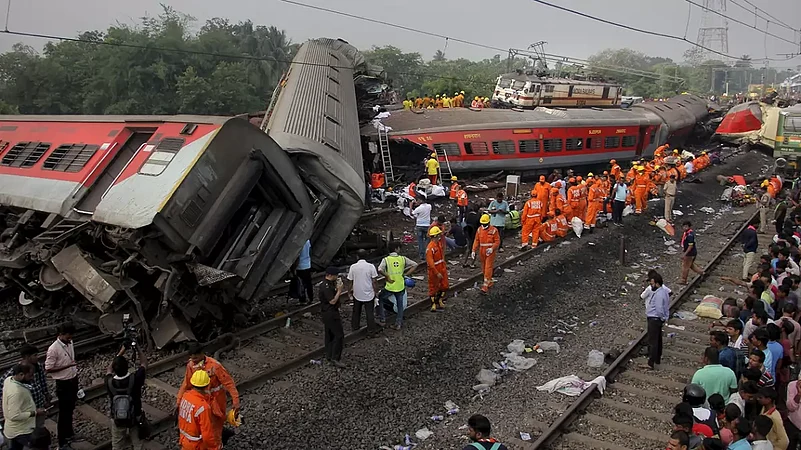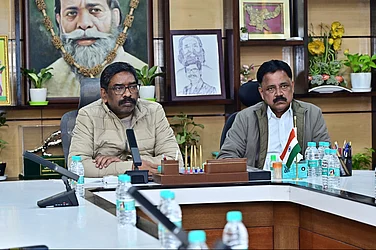The Railway Board has recommended an investigation by the Central Bureau of Investigation (CBI) into the triple-train tragedy at Balasore in Odisha.
Railway Minister Ashwini Vaishnaw on Sunday evening said that a CBI inquiry has been recommended into the tragedy.
Earlier, the Centre had ruled out driver error and system malfunction, indicating the possibility of sabotage and tampering of the electronic interlocking system that caused the accident.
A total of 275 people were killed and over 1,000 were injured in the Odisha train accident on Friday evening, according to the revised death toll. Odisha Chief Secretary PK Jena said some bodies were counted twice.
Around 7 pm on Friday, the Coromandel Express rammed into a stationary goods train and many of its carriages overturned. Some of these carriages rammed another passenger train, Bengaluru-Howrah Superfast Express, which was also passing on the adjacent railway track at the same time. Carriages of this train also overturned.
What did the Railway Minister say?
After saying that the "root cause" of the Odisha train accident had been found, Railway Minister Ashwini Vaishnaw on Saturday said that a CBI probe has been recommended into the accident.
He said, "We have recommended a CBI probe into the triple train accident that claimed 275 lives and left over 1,000 injured."
Vaishnaw further said that round-the-clock care of injured is being taken.
He said, "Patients are being given all facilities in hospitals. There are teams of doctors who are taking care of patients round-the-clock."
Vaishnaw said the government was trying to get in touch with the families of the deceased.
Earlier on Sunday, Vaishnaw said the root cause of the train crash and the people responsible for it have been identified.
Vaishnaw said the issue is of electric point machine, a vital device for railway signalling, and electronic interlocking.
The change that was made to electronic interlocking which led to the accident has been identified, Vaishnaw said while denying that the incident had anything to do with the anti-collision system "Kavach".
Vaishnaw said, "The enquiry into the accident has been completed and as soon as the commissioner of railway safety (CRS) provides his report all the details will be known. The root cause of the horrifying incident has been identified...I do not want to go into details. Let the report come out. I will just say that the root cause and the people responsible have been identified."
Vaishnaw further told PTI, "The setting of the point machine was changed. How and why it was done will be revealed in the probe report."
An electric point machine is a vital device for railway signalling for quick operation and locking of point switches and plays an important role in the safe running of trains. Failure of these machines severely affects train movement and deficiencies at the time of installation can result in unsafe conditions.
Green signal was given to the train
The Railways on Sunday said the Coromandel Express was had received the green signal to enter a loop line on which a goods train was stationary.
This virtually clears the train's driver of any role behind the accident. The Railways also said that the train was not overspeeding.
"Green signal means that in every way the driver knows that his path ahead is clear and he can go forward with his permitted maximum speed. The permitted speed at this section was 130 kmph and he was running his train at 128 kmph which we have confirmed from loco logs," said Railways' Member of Operation and Business Development Jaya Varma Sinha.
Sinha added, "In both the trains, there was no question of over-speeding. Preliminary finding has found that there is a signalling issue."
Sinha also said that only one train was involved in the accident, which collided with the other two trains.
She said, "Only one train was involved in the accident, it was the Coromandel Express. The Coromandel Express crashed with the goods train and its coaches went on top of the goods train. It was an iron ore-laden train, a heavy train, therefore the entire impact of the collision was on the train."
The preliminary investigation report into the Odisha train accident said that the train was given the signal, reported PTI.
The preliminary probe report, a copy of which is with PTI, said the signal was given and taken off for the up main line for train number 12841 (Coromandel Express). The train entered the loop line, dashed with the goods train and derailed. In the meantime, train number 12864 (Bengaluru-Howrah Superfast Express) passed through the down main line and two of its coaches derailed and capsized, the report said.
Railway officials explain how the accident
Issues with the point machine and the electronic interlocking system have been identified as being the root cause of the Odisha accident.
Explaining how the two key components could be responsible for the accident, Principal Executive Director of Signalling Sandeep Mathur said that if the train has to move to a loop line the point machine has to be operated.
He said, "We have to see whether the track ahead is occupied or not. Signal is interlocked in such a manner that it will show if the line ahead is occupied or not. It will also be known whether point is taking the train straight or towards loop line. When the point shows straight and the track ahead is not occupied then the signal is green and if the point is taking the train on loop and track is clear then signal is yellow and the route is shown of a different direction."
Mathur said the interlocking system is a safe way to guide the train out of a station.
These interlocking can be of two types -- electronic or non-electronic. Mathur and Sinha said that the system is "fail safe" and "error proof".
Sinha added, "It is called a fail safe system, so it means that even if it fails, all the signals will turn red and all train operations will stop. Now, as the minister said there was a problem with the signalling system. It could be a physical error, whereby someone has done some digging without seeing the cables."
(With PTI inputs)


























